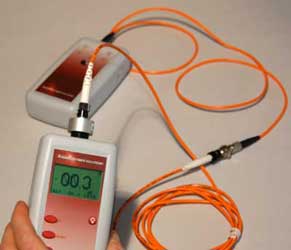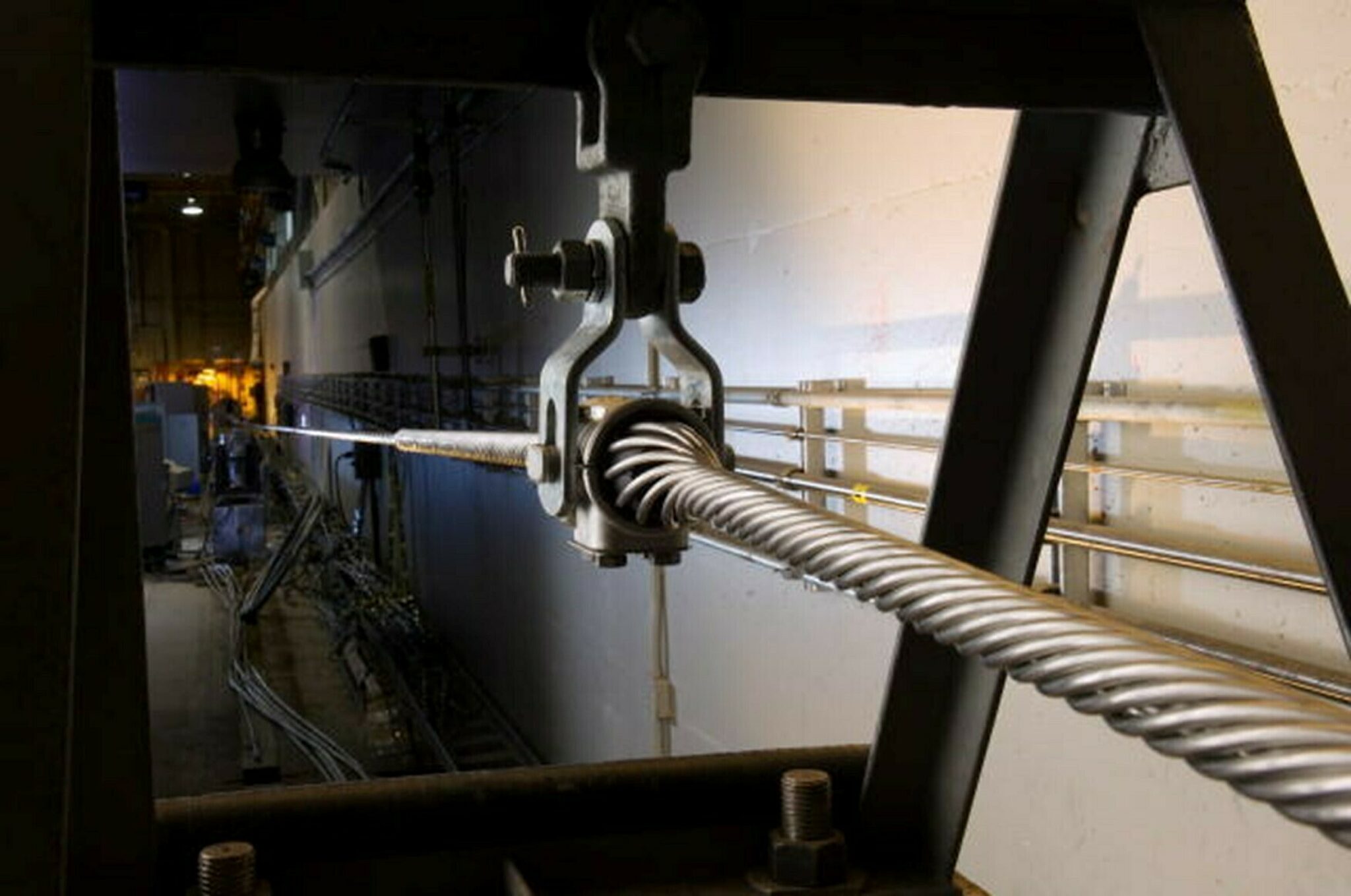Optical fibre testing equipment maintains reliability in fibre network installations.
Optical fibre testing equipment maintains reliability in fibre network installations.
Blog Article
Discover the Value of Optical Fibre Screening in Modern Telecom
In the realm of modern-day telecommunications, the value of optical fibre screening can not be overemphasized, as it works as the foundation for ensuring network dependability and performance. By carrying out normal screening protocols, drivers can preemptively recognize potential concerns such as signal deterioration, thus securing against disruptions that might prove pricey. Advanced techniques like Optical Time-Domain Reflectometry play a pivotal role in this process, yet numerous might forget the wider implications of these methods. What are the specific benefits that regular screening offers, and how might it form the future landscape of telecommunications?

Recognizing Optical Fibre Testing
Optical fiber screening is a critical procedure in telecoms that makes certain the honesty and efficiency of fibre optic networks. This testing incorporates a variety of procedures made to review the physical and practical characteristics of optical fibers - optical fibre diameter analyser. Secret specifications assessed consist of optical power loss, bandwidth ability, and mistake area, which are necessary for preserving premium communication web links
The testing procedure usually involves using specific equipment such as Optical Time-Domain Reflectometers (OTDR) and Optical Power Meters. OTDRs are used to determine and define mistakes, interlaces, and connectors within the fibre, while power meters measure the transmitted light signal strength to identify performance.
Additionally, testing is carried out at numerous stages, including during setup, upkeep, and troubleshooting, to ensure that the network satisfies market standards and functional requirements. Conformity with criteria set by organizations like the International Telecommunication Union (ITU) and the Telecoms Sector Association (TIA) is vital.
Advantages of Routine Evaluating
Routine testing of optical fibres returns many advantages that considerably improve network integrity and efficiency. Among the key benefits is the early detection of potential concerns, such as breaks or deterioration in the fibre, which can lead to costly downtime if left unaddressed (robotic vision). By identifying these problems proactively, telecommunications carriers can lessen service disruptions and make sure consistent connectivity for their customers
Additionally, regular testing helps to maintain the honesty of signal top quality. As optical fibers age, their efficiency can be influenced by variables such as ecological problems and physical anxiety. Routine evaluations permit the tracking of signal loss and general transmission efficiency, ensuring that the network operates at ideal degrees.
Another substantial benefit is conformity with market requirements. Regular testing sustains adherence to governing needs, therefore mitigating legal and economic threats linked with non-compliance. Furthermore, it enhances the general life expectancy of the fiber framework by facilitating timely repair and maintenance.

Typical Examining Methods
Testing optical fibres uses different techniques to ensure the integrity and efficiency of telecoms networks. Among the most usual methods is Optical Time Domain Reflectometry (OTDR), which assesses the whole length of the fibre by sending a pulse of light and gauging the reflections created by blemishes or breaks. This technique supplies comprehensive info concerning the place and intensity of mistakes.
An additional prevalent method is using Optical Power Meters, which gauge the amount of light transmitted with the fiber. This strategy assists identify the loss of signal toughness, making certain that it fulfills market criteria. Additionally, Aesthetic Fault Locators (VFL) are utilized to recognize breaks or extreme bends in the fibre by forecasting a visible laser light right into the cord.
Insertion loss screening is also vital, as it measures the loss of signal power resulting from connections and entwines within the network. The use of Polarization Setting Diffusion (PMD) screening assesses the impact of fibre features on signal integrity.
Each of these methods plays an essential role in maintaining the efficiency and reliability of optical fibre networks, inevitably adding to seamless telecommunications procedures.
Effect on Network Efficiency
The honesty and efficiency of optical fibre networks directly great site influence general network efficiency. In modern telecommunications, the performance of information transmission relies greatly on the high quality of the optical fibres used. Any kind of degradation in the fibre's condition-- whether as a result of physical damages, contamination, or extreme bending-- can result in increased depletion and signal loss, dramatically influencing information honesty and rate.
Normal optical fiber testing is necessary to recognize and fix possible problems before they show up as network failures or slowdowns. Techniques such as Optical Time Domain Reflectometry (OTDR) and insertion loss screening allow specialists to measure the performance of fibre links properly. These examinations not just evaluate the physical problem of the fibres but likewise make sure conformity with industry standards, thus protecting the network's reliability.
Additionally, a well-kept optical fibre network contributes to minimized operational prices and improved client satisfaction, as end-users find here experience fewer disturbances and higher data rates. Inevitably, the emphasis on extensive optical fibre screening methods acts as a keystone for maintaining robust telecoms framework, making sure that company can fulfill the growing needs for data transfer and connection in today's electronic age.
Future Fads in Testing
As we look in advance, advancements in modern technology are poised to reshape optical fibre screening in telecommunications. The increase of automation and expert system (AI) is anticipated to improve the efficiency and precision of screening procedures. Automated testing systems can perform detailed analyses with minimal human intervention, substantially lowering the capacity for mistakes and quickening time-to-deployment.
Furthermore, the assimilation of maker knowing algorithms will allow predictive maintenance, permitting network companies to visualize prospective concerns prior to they intensify right into failings. This proactive technique not only boosts network dependability but additionally enhances functional costs.
An additional emerging pattern is the advancement of portable testing tools that use real-time evaluation - robotic vision. These gadgets will equip service technicians to do on-site diagnostics quickly, helping with quicker resolutions and enhancing service top quality
The expansion of 5G networks even more requires the advancement of testing techniques. As data transfer demands enhance, conventional testing methods may no longer are sufficient. Ingenious services such as optical time-domain reflectometry (OTDR) and progressed spectral analysis will end up being critical in making certain the honesty and performance of high-speed connections.

Final Thought
To conclude, optical fibre screening is essential for ensuring the integrity and reliability of contemporary telecommunications networks. Routine screening techniques not only assist identify potential problems explanation such as signal loss and mistakes yet also add to boosted network performance and consumer fulfillment. As the demand for smooth connectivity proceeds to expand, the adoption of sophisticated testing approaches will play a critical role in maintaining high-quality network criteria and sustaining the advancing landscape of telecoms.
Report this page